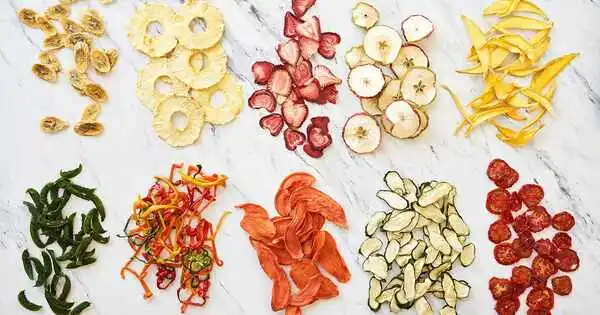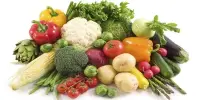Food drying is a food preservation technique in which food is dried (dehydrated or desiccated). Through the removal of water, drying inhibits the growth of bacteria, yeasts, and mold. Dehydration has been widely used for this purpose since ancient times, with the earliest known practice dating back to 12,000 B.C. by inhabitants of the modern Middle East and Asia.
Food drying is a method of preserving food that involves removing moisture from food items in order to extend their shelf life. By reducing the water content, microorganisms that cause spoilage and decay are inhibited, allowing the food to be stored for longer periods of time. Food drying concentrates flavors and nutrients, making it a popular method for preserving fruits, vegetables, meats, herbs, and grains.
Water has traditionally been removed by evaporation using methods such as air drying, sun drying, smoking, or wind drying, but electric food dehydrators or freeze-drying can now be used to speed up the drying process and ensure more consistent results.
Here are some common methods used for food drying:
- Sun drying: This traditional method involves placing food items in direct sunlight to dry naturally. It is commonly used for fruits, vegetables, and herbs. However, sun drying requires hot and dry weather conditions, making it unsuitable in areas with high humidity or during certain seasons.
- Air drying: Air drying involves placing food items in a well-ventilated area to allow the moisture to evaporate. It can be done indoors or outdoors, depending on the weather conditions. Air drying is often used for herbs, flowers, and some fruits and vegetables.
- Oven drying: This method involves drying food in an oven at low temperatures. It is a convenient option, especially when sun or air drying are not options. Many ovens have a “dehydrator” setting that provides a low, consistent temperature for drying. It’s critical to leave the oven door slightly ajar to let moisture escape.
- Dehydrator: A food dehydrator is a machine that is specifically designed to dry food. It circulates air and uses low heat and a fan to speed up the drying process. Dehydrators provide precise temperature control as well as multiple trays for drying different foods at the same time. Fruits, vegetables, jerky, herbs, and nuts are all common uses for them.
When drying food, it is important to consider the following guidelines:
- Wash, peel, and slice the food into uniform pieces to ensure even drying.
- Certain foods should be pre-treated to retain their color, flavor, and nutritional value. Blanching, steaming, or dipping in acidic solutions such as lemon juice or ascorbic acid are all techniques.
- Arrange the food in a single layer to allow for proper air circulation and drying.
- Regularly monitor the drying process and rotate or flip the food pieces to promote even drying.
- To achieve the desired results, stick to the recommended temperature and drying time for each food item.
- To protect the dried food from moisture, light, and pests, store it in airtight containers or packaging.
















